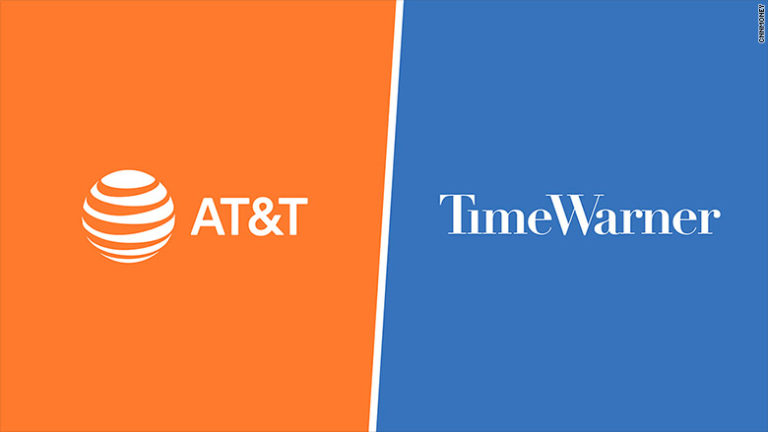Impact of AT&T, Time Warner merger unknown

An antitrust judge recently ruled that distributor AT&T could merge with Time Warner, owner of several content brands. While this court case is one that will impact the industry for years to come, does it impact your business?
This month’s column will focus on the impact of the merger and why it may be a big deal.
In 2016, AT&T announced a bid for Time Warner for $85 billion. About 18 months ago the boards of the two companies voted to move forward with the deal valued at $108 billion including Time Warner’s debt. In November 2017, the United States Justice Department sued to block the merger citing antitrust reasons.
On June 12, the United States District Court in Washington, D.C., ruled the merger could move forward. Judge Richard J. Leon wrote that the government hadn’t proven its case of antitrust harm and that the merger could proceed without any conditions.
As a point of clarification, Time Warner is not the same company as Time Warner Cable that merged with Charter Communications in 2016. This Time Warner includes media and content assets such as HBO, TBS, TNT, CNN and HLN, as well as movie franchises like Superman, DC Comics and Harry Potter. Also, AT&T had previously purchased DirecTV satellite service, providing nationwide services.
For decades, telecommunications providers viewed as their competitors other telecommunications providers. This continued until broadband began its development. Over the past 10 years or so, technologies have changed and the focus of competition from broadband providers has changed.
Traditional telephone providers like AT&T quit viewing other telephone providers as competitors and began viewing all distribution providers, including those of other technology services like Comcast or Charter, as competitors.
The next logical step in the evolution was for distribution providers, like AT&T, to offer as much content as possible over their network. That challenged providers to get into video services.
In today’s environment, video service isn’t enough. It is also necessary for providers to offer additional content options across all platforms (wired and wireless) with enough flexibility to meet customers where they are.
In that realm, the AT&T-Time Warner merger continues a trend that was seen when Comcast purchased NBC Universal and Verizon purchased Yahoo and Huffington Post. Each trying to purchase content for their platform.
This evolution is known as vertical integration and the merger is called a vertical merger. AT&T, like other providers, wants to own the content that they are providing. Over time, it would be cheaper to purchase the content with a high upfront expense versus paying for it on a monthly basis. This vertical approach can be seen in other industries.
An example can be seen when a car manufacturer purchases a supplier of parts that go into its vehicle. While not unique, it is certainly something that catches our eye because we see the details every month when we look at our bill in a way that is different from how we purchase a car.
The merger will likely set off a wave of mergers. Comcast has already put a bid in for 21st Century Fox. Other content providers that could be involved include CBS, Viacom, Netflix, Discovery, Hulu and more.
What will the merger mean for you? One of the concerns brought up by Justice Department was that the merger will cause consumer prices to increase.
First, if there wasn’t money to made, the merger wouldn’t have happened. So, the chance pricing goes up is certainly possible. The goal for the merger was the opposite but that remains to be determined.
A second goal for the merger is to provide customers with a better experience, including switching between TV, tablet, computer or cellphone. Third, it will make it easier for them to target advertisements, which are necessary to pay the bills.
What will that mean for your business? This specific merger may not impact your business directly. However, there is a good chance the AT&T-Time Warner merger, along with the court ruling, will trigger a series of mergers.
The more vertical mergers that take place, the larger the ecosystem you operate in.
There may be a time that you and your business will need to consider the distribution, content and related aspects that you need and choose your provider accordingly.
It will no longer just be about a provider’s coverage or whose service is available in a specific area. It will also be about the content and platforms available to you and your business. While many are concerned about the consumer, and for good reason, I am very excited about the possibilities and the business impact.
The next few years will be full of change in the distribution/content vertical.
As the changes take place, watch with two perspectives: consider what is possible and consider what will work best for your business.
We live in a great time of technological and industry change. I think there are more big changes on the horizon. This is just the beginning. Stay connected and watch out for what’s next.
Michael Ramage is the director of the Center for Telecommunications Systems Management (CTSM) at Murray State University and serves as the president of the Technology Council of West Kentucky. He can be reached at [email protected] or 270-809-3987.
Originally published in the Four Rivers Business Journal and available at http://www.paducahsun.com/business/journal/tech-council-eyes-regional-it-growth/article_1eebadad-7575-5bf5-bc12-a1e6631cc224.html